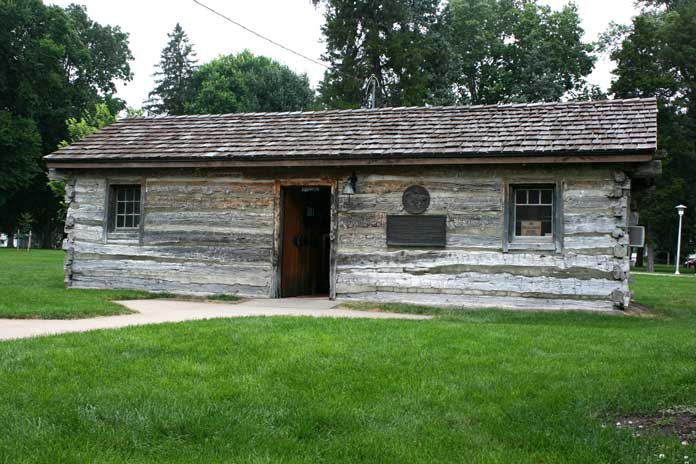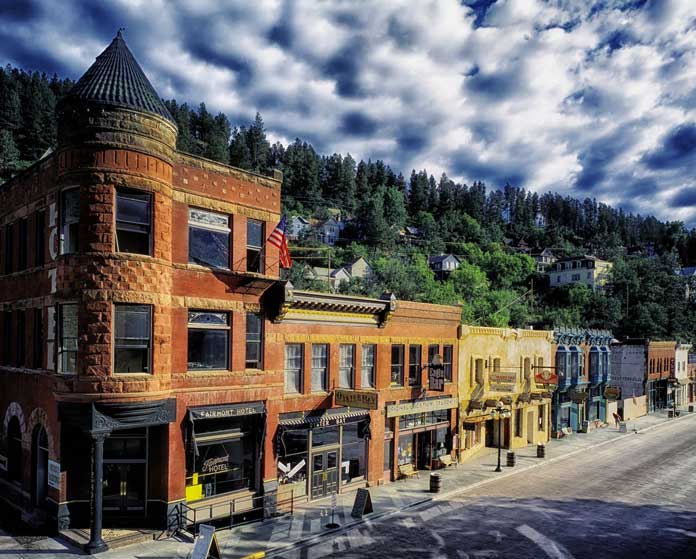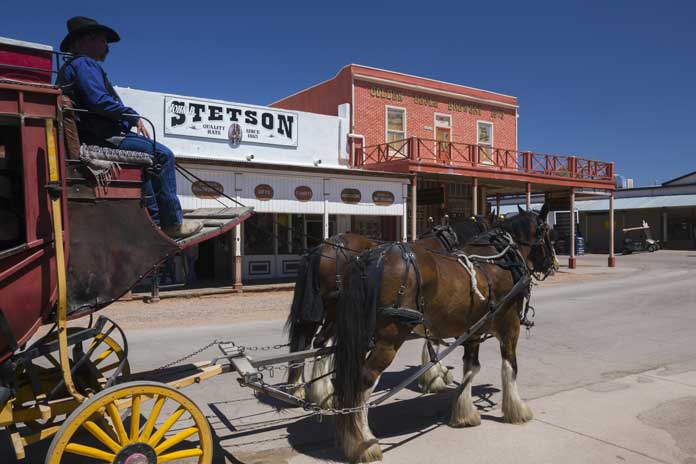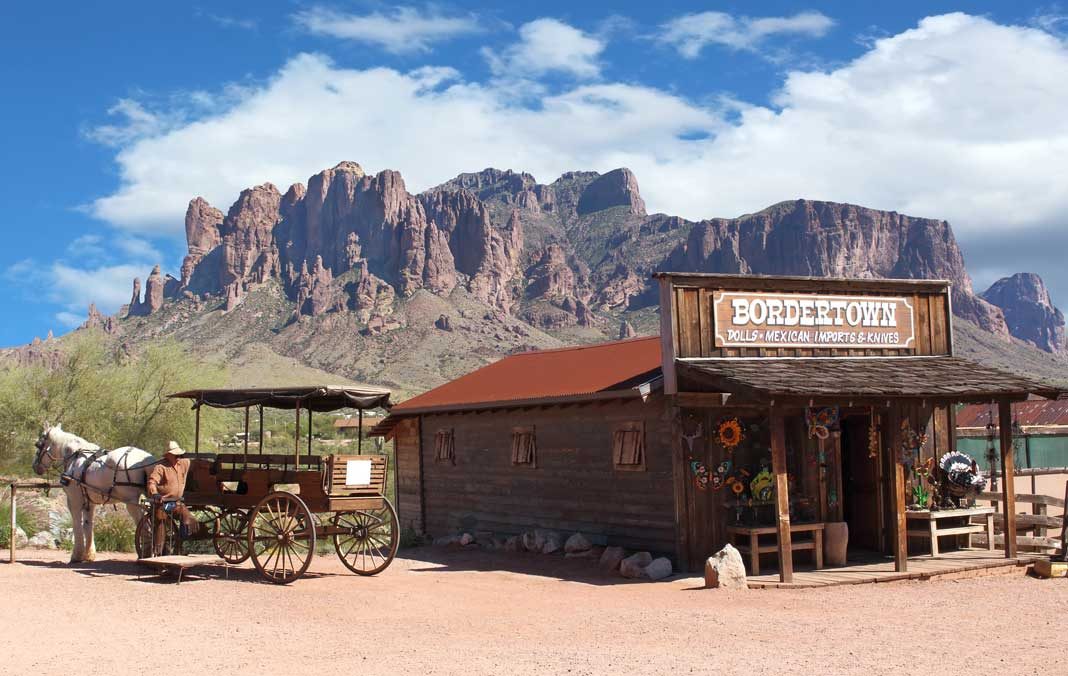The Western States of the U.S. earned the nickname the “Wild West,” from its rowdy and lawless inhabitants many years ago. Gold and silver discoveries, fighting over the land and trying to survive in the harsh and dry conditions of the American West were not for the weak. As covered wagons and people on horseback journey to the Southwestern, Northwestern and Midwest States, a civilization evolved into what is now today. Before there were cars, there were gun battles and saloons and cattle drives that created the horses anywhere from 75 to 100 miles until another rider took their place. The stations were anywhere from 10 to 25 miles apart, and a fresh horse was provided at each station. The job was difficult, and the terrain was harsh, but during the years of the Pony Express, only one rider lost his life, and just one bag of mail was lost. The express ran through Missouri, Kansas, Nebraska, Colorado, Wyoming, Utah, Nevada and California. The Pony Express museum can be found in St. Joseph, Missouri.

Table of Contents
Deadwood, South Dakota
Deadwood was a hotspot for battles over land, as treaties were established, broken and caused the struggle over whose land was whose. Gold was discovered in 1874, and the Black Hills Gold Rush commenced, making the battles never ending. The city of Deadwood quickly reached 5,000 citizens during the rush and maintaining the law was an issue. The already rowdy crowd attracted similar characters, and the town was full of trouble. The city became known for its lawlessness and murders became common. As the gold rush wore off, mining took its place and with it less rowdy and more law-compliant citizens. Famous individuals such as Wild Bill Hickok, Calamity Jane, Wyatt Earp, Lewis and Clark and George Armstrong Custer were all known to have lived or visited the Wild West town of Deadwood.

Fort Sumner, New Mexico
Fort Sumner was created to help protect settlers in the Pecos Valley region from Native American attacks. The area also had a 40 square mile reservation where The Navajo and Apache Indians were forced to live, even though they did not get along. The most famous incident at Fort Sumner besides battles, disease, and trouble was the demise of Billy the Kid, a famous western character who was known as an outlaw. Here, Sheriff Pat Garrett wanted to question Pedro Menard Maxwell, a friend of Billy the Kid, about the Kid’s whereabouts and went to his house. Sherrif Pat Garret found him in one of the rooms of the house and killed Billy the Kid. The Kid is now buried in the military cemetery at Fort Sumner with two of his outlaw accomplices Charlie Bowdre and Tom O’Folliard.
Ruby, Arizona
Ruby, Arizona has one of the best-preserved ghost towns in the U.S. The mineral-rich area provided mines, jobs, and trouble. Due to the proximity to Mexico, the area was often attacked by the international neighbors, and people who lived here were known to keep guns in every room of their house. Several brutal murders had occurred at the hands of some Mexican bandits, and the struggle between the borders continued. Rewards were offered for outlaws, Arizona lawmen began to frequent the area, and the mining and rough and rowdy life continued. Today, there are many of the old buildings and legends that are still standing.
The California Trail
The California Trail led the way to gold and was the most significant mass migration in the United States. The trail started at various points along the Missouri River and stretched to areas in California, Oregon, and the Sierra Nevada. When gold was discovered in Coloma, California, the hundreds of emigrants soon turned into thousands as they flocked to seek their fortune. Over 250,000 gold-seekers, farmers, and settlers traveled the trail route to California during the boom. The trail has over 5,665 miles of terrain that people used, and today U.S. Highways 40 and 80 follow the path of the famous trial. Still visible today are over 1,000 miles of traces and trail ruts. Many can be seen between Casper, Wyoming and the west coast.
Tombstone, Arizona
Deemed the “town too tough to die,” Tombstone is located in Arizona. Today, it is a major tourist attraction located outside of Tucson. Reenacted gunfights and the restored remains of an old ghost town draw thousands to its streets. The legendary fight at the O.K. Corral took place here in which a gun battle between longtime rivals Virgil, Wyatt and Morgan Earp along with Doc Holiday against five members of the infamous Clanton gang. Retaliation occurred, with Morgan being killed by the gang and the Earps and Doc Holiday spent the next year chasing down the gang and killing them one by one. The wild town started off as a mining camp, and as more and more silver was discovered, the town began to grow. The town had the largest “red light” district in the southwest and had more saloons than churches and schools. The area had been restored to save the town, which succeeded.

Delamar, Nevada
Delamar was also a mining town, and the small village produced 260 tons of ore daily. The remote area meant citizens had to pump water from a well over 12 miles away and the ore was hauled out by mule teams for miles as well. Gold was also discovered in some of the mines, but this gold was mixed with quartzite. The process of removing the gold from the rock caused large amounts of dust which had tiny glass particles in it from the quartzite. With so much dust being produced, the town folk and especially the miners fell sick with a disease called silicosis. The disease killed many, and the town earned the name “Widow Maker,” because over 400 widows lived there because their mining husbands had passed from the disease. The two cemeteries that remain there to this day have many tombstones that state the cause of death from the quartz dust.
The West Was Won
The West was a wild and crazy place as greed took hold of many in the fight for gold, silver, and other precious resources. Gunslingers, outlaws, and bandits ran the west, and the law could only try to keep up. Nowadays many of the places have been restored or kept up as ghost towns, historic heritage, trails and many others. The legends they left behind still remain and in many places so do their alleged ghosts.




